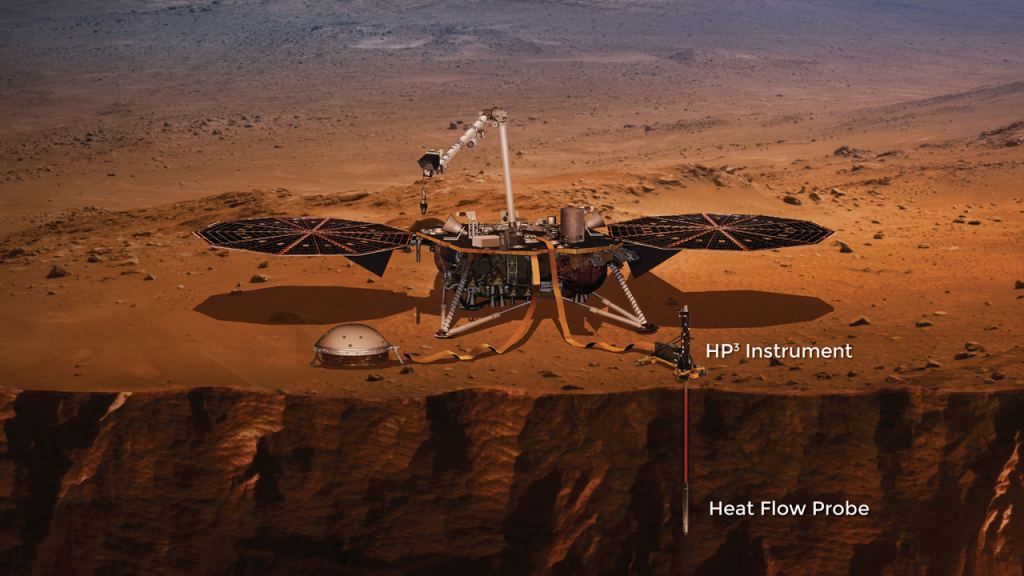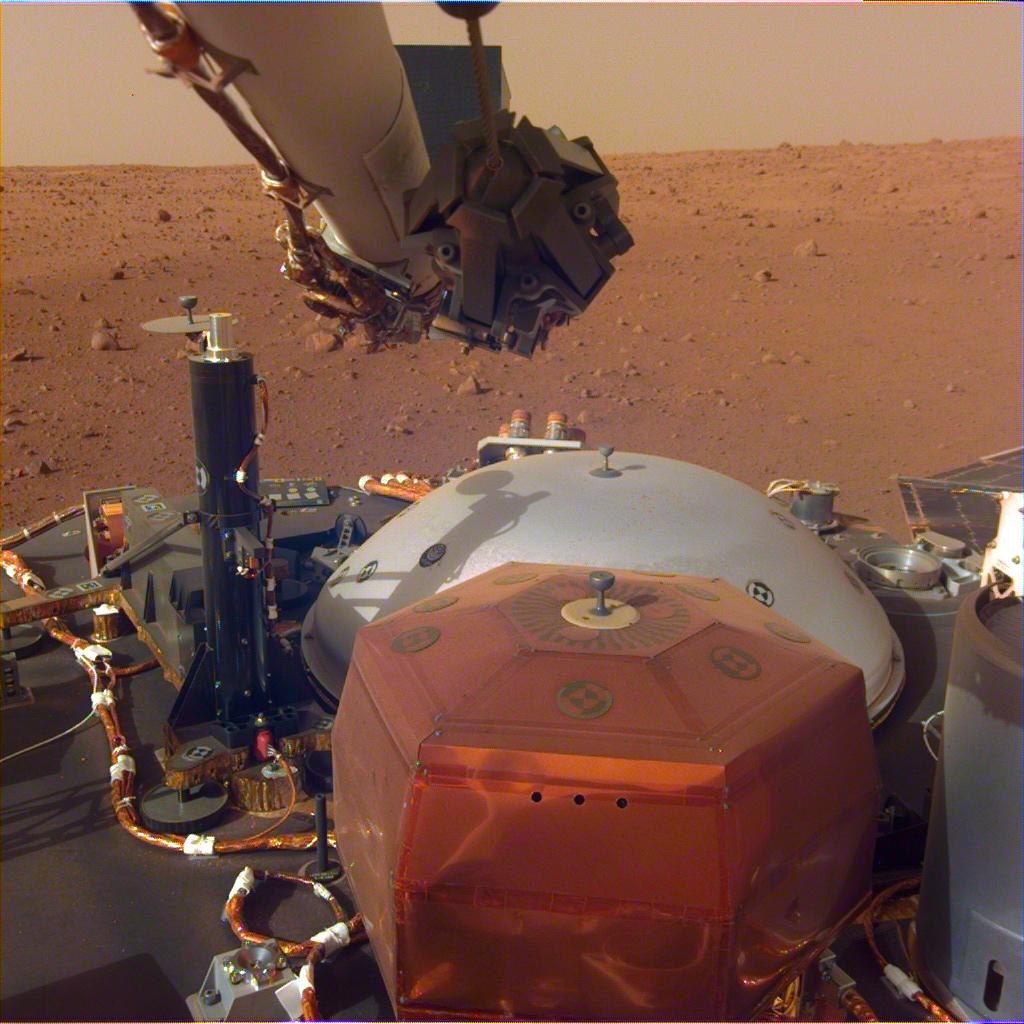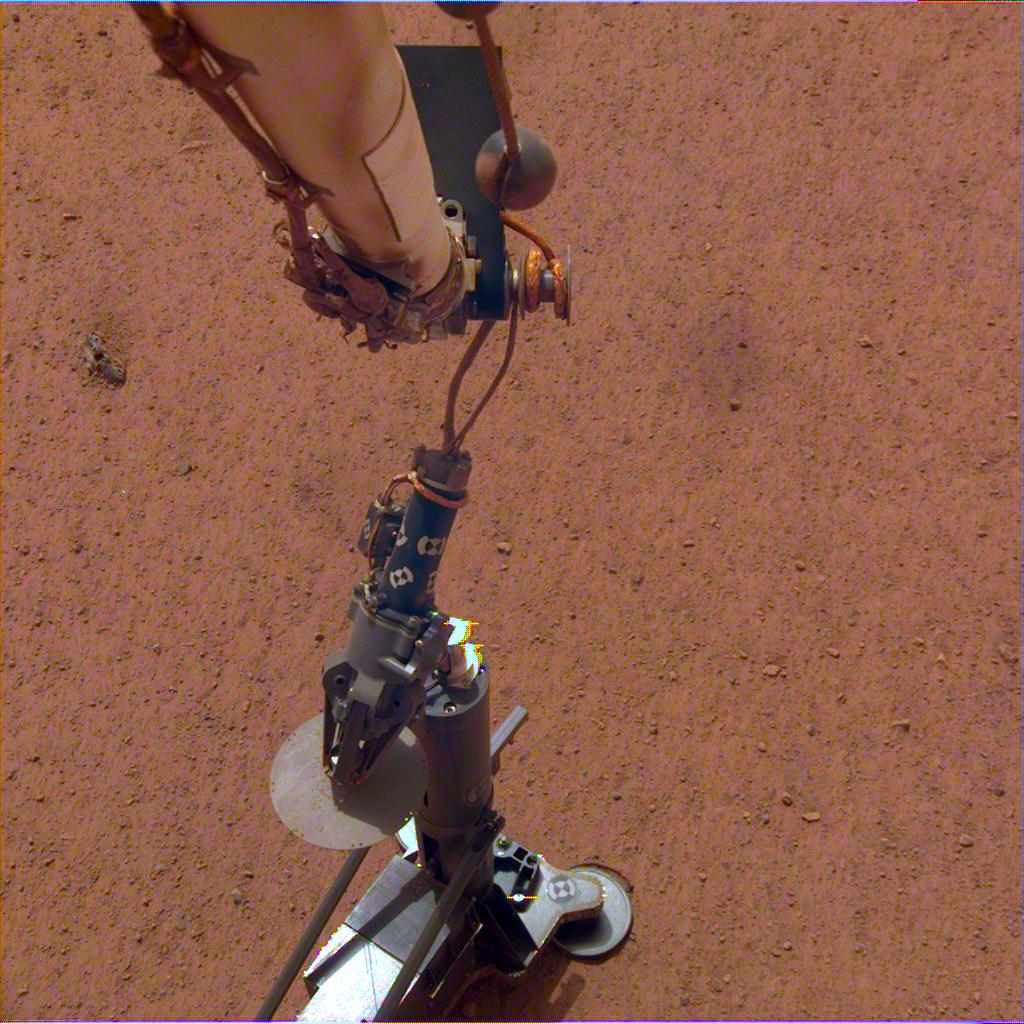NASA’s InSight lander has finally placed its heat probe on the surface of Mars. The Heat Flow and Physical Properties Package (HP3) was deployed on February 12th, about one meter away from SEIS, the landers seismometer. Soon it’ll start hammering its way into the Martian soil.
If you’re starting to get used to feats like this, keep a few things in mind.
The lander is on Mars, a planet that’s over 50 million kilometers away, and takes about 6 months to travel to. Once there, the lander had to go through a perilous landing process just to arrive on the surface intact. It’s landing site was carefully chosen, and in order for this stationary lander to do its thing, it has to stick its landing.
Then comes the hard part.
“Within a few days, we’ll finally break ground using a part of our instrument we call the mole.”
Tilman Spohn, HP3 Principal Investigator, German Aerospace Center.
Insight had to carefully examine its surroundings and decide on the perfect spot to place its instruments. After weeks of examination, it chose this exact spot for the HP3. Then comes the Heat Probe, which is a feat of engineering in itself.
“That thing weighs less than a pair of shoes, uses less power than a Wi-Fi router and has to dig at least 10 feet [3 meters] on another planet,” Hudson said. “It took so much work to get a version that could make tens of thousands of hammer strokes without tearing itself apart; some early versions failed before making it to 16 feet [5 meters], but the version we sent to Mars has proven its robustness time and again.”
The whole purpose of this endeavour is to learn about the interior structure of Mars. The Heat Probe and Physical Properties Package will measure the amount of heat coming out of the center of Mars. To do that, it has to hammer its way into the planet.

“Our probe is designed to measure heat coming from the inside of Mars,” said InSight Deputy Principal Investigator Sue Smrekar of NASA’s Jet Propulsion Laboratory in Pasadena, California. “That’s why we want to get it belowground. Temperature changes on the surface, both from the seasons and the day-night cycle, could add ‘noise’ to our data.”
HP3 has to get at least 3 meters below the surface to do its job, but ideally it would get to the 5 meter mark, its maximum depth. The part of the probe that does the penetration is called the mole, which is 40 cm (16 inches) long. The mole will stop every 50 cm (19 inches) and measure the thermal conductivity of the soil. But it has to wait for two days to cool down before measuring, because the hammering will create friction that heats up the soil. That heat would introduce noise into the data.
Once it’s taken readings, the heat probe is then heated up and more readings are taken to test the thermal conductivity. Then the whole process is repeated. At that rate, it could take two weeks to get to the 3 meter depth.
If the probe bumps into a rock before it gets to 3 meters, then the whole mission profile changes. If it’s any shallower than 3 meters, then it’ll take a year to filter noise out of the heat conductivity readings, because the probe won’t be sufficiently isolated from surface temperatures. This is why such great care was taken to select a spot for the probe.

“We picked the ideal landing site, with almost no rocks at the surface,” said JPL’s Troy Hudson, a scientist and engineer who helped design HP3. “That gives us reason to believe there aren’t many large rocks in the subsurface. But we have to wait and see what we’ll encounter underground.”
Other landers have dug into the surface of Mars before, but InSight’s HP3 will outdo them all. NASA’s Viking 1 lander scooped 22 cm (8.6 inches) down. The Phoenix lander, a cousin of InSight, scooped 18 cm (7 inches) down.
“We’re looking forward to breaking some records on Mars,” said HP3 Principal Investigator Tilman Spohn of the German Aerospace Center (DLR), which provided the heat probe for the InSight mission.
But the earlier landers had a different mission: to sample the soil. In a way, it’s unfair to compare them. Plus, it shouldn’t be a surprise that our technology has advanced since those landers had their day.
Understanding Mars’ heat is key to understanding how it and other rocky planets form, and how the surface geology is shaped. Mars retains heat from its formation about 4 billion years ago, and heat is also produced by radioactive decay in its interior.
“Most of the planet’s geology is a result of heat,” Smrekar said. “Volcanic eruptions in the ancient past were driven by the flow of this heat, pushing up and constructing the towering mountains Mars is famous for.”
The way that the heat moves through the Martian mantle and crust determines the surface features. Mars is home to Olympus Mons, the tallest volcano in the Solar System. At almost 25 km (13.6 mi) high, it’s nearly three times taller than Mt. Everest. Mars is also home to Tharsus Montes, three shield volcanoes from 14 to 18 km high. Just like volcanoes on Earth, they were created when magma was forced through cracks in the crust.
“We want to know what drove the early volcanism and climate change on Mars,” Spohn said. “How much heat did Mars start with? How much was left to drive its volcanism?”
Scientists have modelled the interior of Mars according to the best data available. But InSight’s HP3, and its SEIS instrument, will answer a lot of questions and clarify our understanding of the red planet.
“Planets are kind of like an engine, driven by heat that moves their internal parts around,” Smrekar said. “With HP3, we’ll be lifting the hood on Mars’ engine for the first time.”
But it’s about more than just Mars. It’s about understanding how all rocky planets form. That includes Mars, Earth, rocky moons, and all other rocky planets in our Solar System, and in others.
Sources:
- Press Release: NASA’s InSight Prepares to Take Mars’ Temperature
- Press Release: NASA’s InSight Has a Thermometer for Mars
- InSight Heat Probe

